The Economics and Statistics Division maintains archives of previous publications for accountability purposes, but makes no updates to keep these documents current with the latest data revisions from Statistics Canada. As a result, information in older documents may not be accurate. Please exercise caution when referring to older documents. For the latest information and historical data, please contact the individual listed to the right.
<--- Return to Archive
For additional information relating to this article, please contact:
August 09, 2018CMHC PRELIMINARY HOUSING STARTS, JULY 2018 
Nova Scotia's housing starts (seasonally adjusted annualized rate) increased 0.9 per cent in July to 6,116 compared to 6,063 in June. Housing starts increased by 8.1 per cent in Halifax to 4,627 compared to 4,281 in June.
Compared to July 2017, Nova Scotia housing starts were up 40.2 per cent, and Halifax starts were up 50.3 per cent.
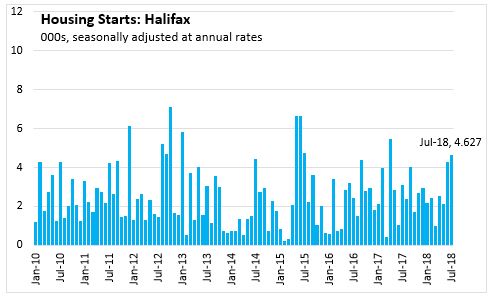
The six-month average of housing starts in both Halifax and Nova Scotia has risen in recent months after being flat over 2017.
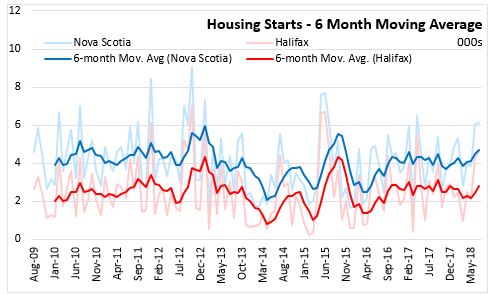
In urban areas, housing starts for multiples are generally higher than for singles with greater variability month-to-month. Starts for singles remained steady through 2017 and have increased in the first half of 2018. Multiple starts have been stronger for the past two months compared to the start of 2018.
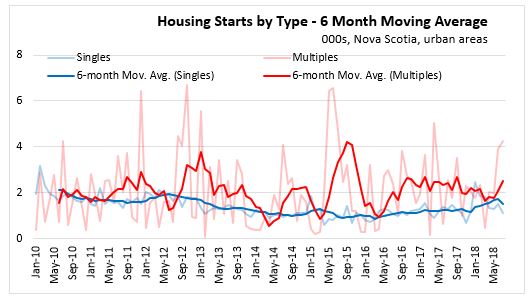
Nationally, housing starts are down 16.2 per cent in July to 206,314 compared to 246,200 in June. Compared to July 2017, housing starts were down 8.3 per cent.
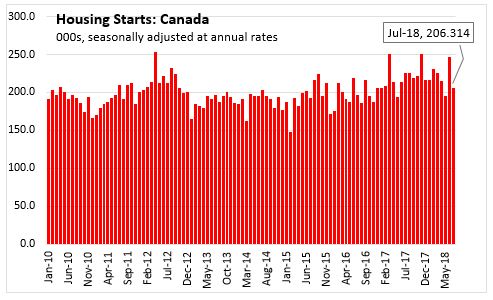
On a year-to-date basis, housing starts were up in six provinces compared to the first seven months of 2017. Newfoundland and Labrador reported the largest increase (+50.4 per cent), while Saskatchewan posted the largest decline (-30.0 per cent). During January-July 2018, Nova Scotia housing starts increased 11.8 per cent compared to the same months last year.
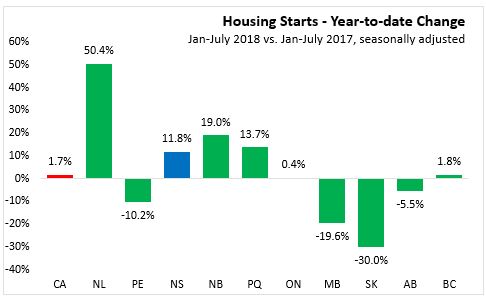
Note: Urban areas are defined as areas over 10,000 people
Statistics Canada. Table 34-10-0158-01 and Table 34-10-0156-01
CHMC Housing Market Information Portal
<--- Return to Archive